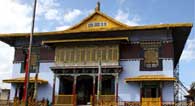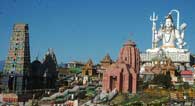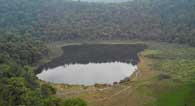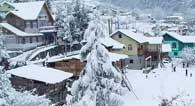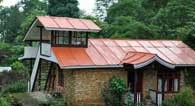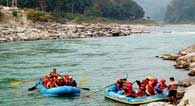CONTACT US
Church Road, Near Pelling Taxi stand, Gangtok-737101, Sikkim, India
Phone no.
+91-9832564013, 03592-206888, 9002069916, 9933448360.
Email : sikkim444@gmail.com
Darjeeling Brief History
History discovered this Himalayan Kingdom in the early years of 19th Century, when it was a part of the domain of Sikkim and assailed
equently by Gorkhas of Nepal. In 1780, Gorkhas marched into Sikkim, annexed the terai, advancing to the Teesta river and setting off unwittingly a conflict, a conflict they had not bargained for, They had trodden on the toes of the British East India Company where the War of 1814
was fought with Nepal, the tract ceded, and the Raja of Sikkim reinstated with his sovereignty guaranteed by the Company. Sikkim
including Darjeeling became a buffer state between Nepal and Bhutan. Ten years later the dispute broke out afresh. In 1828 General
Lloyd was deputed to bring about a settlement. Later J.W. Grant commercial resident of Malda set out for mountain regions and
reached Darjeeling in 1829 the first ever European to set foot on the land. After careful study of the situation and the place
Mr. Grant and the Deputy Surveyor General Captain Herbert were sent to survey the area later, where Mt Grant was asked to open
negotiations with the Sikkim ruler for the cession of the terai as soon as convenient occasion arose. The deed was executed on
February 1, 1835, where the entire hill of Darjeeling spreading from South of Rangeet River was presented to British East India
Company. The king of Sikkim was granted an allowance of Rs.3,000/- and was raised to Rs.6,000/- on 1845.
It is said that during the time Darjeeling had only 20 mud huts around Mahakal Observatory where the population was mere 100 in
number. The prompt and necessary steps were taken by General Lloyd and Dr. Campbell to develop the place. It is indeed remarkable
to note that these benevolent Englishmen spent nights in these lonely mud huts without wraps. After the lapse of four years,
30 buildings were erected, wherein it is said that in 1863, seventy homes were built in the British style.
Darjeeling got its first Superintendent in 1839 and Dr. Campbell who was transferred from Nepal for the job was soon in charge of
political relations with Sikkim, besides running the civil, criminal and fiscal administration. It is said that whenever he found
time, he also acted like Postmaster, Marriage Registrar and Administrator of the station funds. With his effort the population had
risen up to 10,000 by 1849. A road from Pankhabari was laid through dense forest lived with staging bungalows. The first hotel was
build in Kurseong and second was in Darjeeling. Small town in Darjeeling with 70 buildings, a hospital and jail was built.
Cultivation of tea was introduced.
The compensation to the King of Sikkim was withdrawn and the area annexed. The new treaty paved way for trade while removing
all restrictions and bringing an end to the sufferings to the residents of Darjeeling. However this peace treaty was interrupted
by the incursions of Bhutanese. Once again, large force was sent during winter months of 1864 and the whole of Dooars was occupied
with the addition of Kalimpong. In 1891 District Darjeeling was sub divided to Kurseong and then to Kalimpong Sub Division in 1907.
Three British servants Grant, Lloyd and Campbell achieved their full target. Grant and Lloyd secured cession while Campbell built
the district and laid foundation for Tea Industries in 1841 in sprawling hectares of land which fetched million pounds. During
that time many immigrants from Nepal poured in to work in tea gardens. The Cart Road Hill Cart Road to Darjeeling was
constructed from Siliguri.
It is further said the botanist and Indologist Sir, J. D. Hooker and Sir Brian Hodgson lived in Darjeeling in Bryanstone built
1848 at Jalapahar. Another great botanist Xoma De Koros also lived in Darjeeling till his death in 1849. Bishop Cotton, an
educationist, worked under Lord Canning to make Darjeeling the seat of European education in India where several schools had
been established like St Paul`s School, St Joseph's School North Point, Loreto Convent, Mount Hermon School, with many
other schools under Christian Mission. Likewise, many schools had been established at Kurseong and Kalimpong as-well, under
various eminent persons, like Dr Graham's Home and Scottish under Missionary Institute in Kalimpong and Goethals in Kurseong.
These schools reflect the British and European architecture and there commitment to the cause bringing back the vivid memory
of Victorian Era in Darjeeling Hills. Mother Teresa while during her initial days also served as the Mother Superior-the Principal
in Loreto Convent School before starting the Missionary of Charity. Various churches and chapels along with hospitals were also
established during the time.





